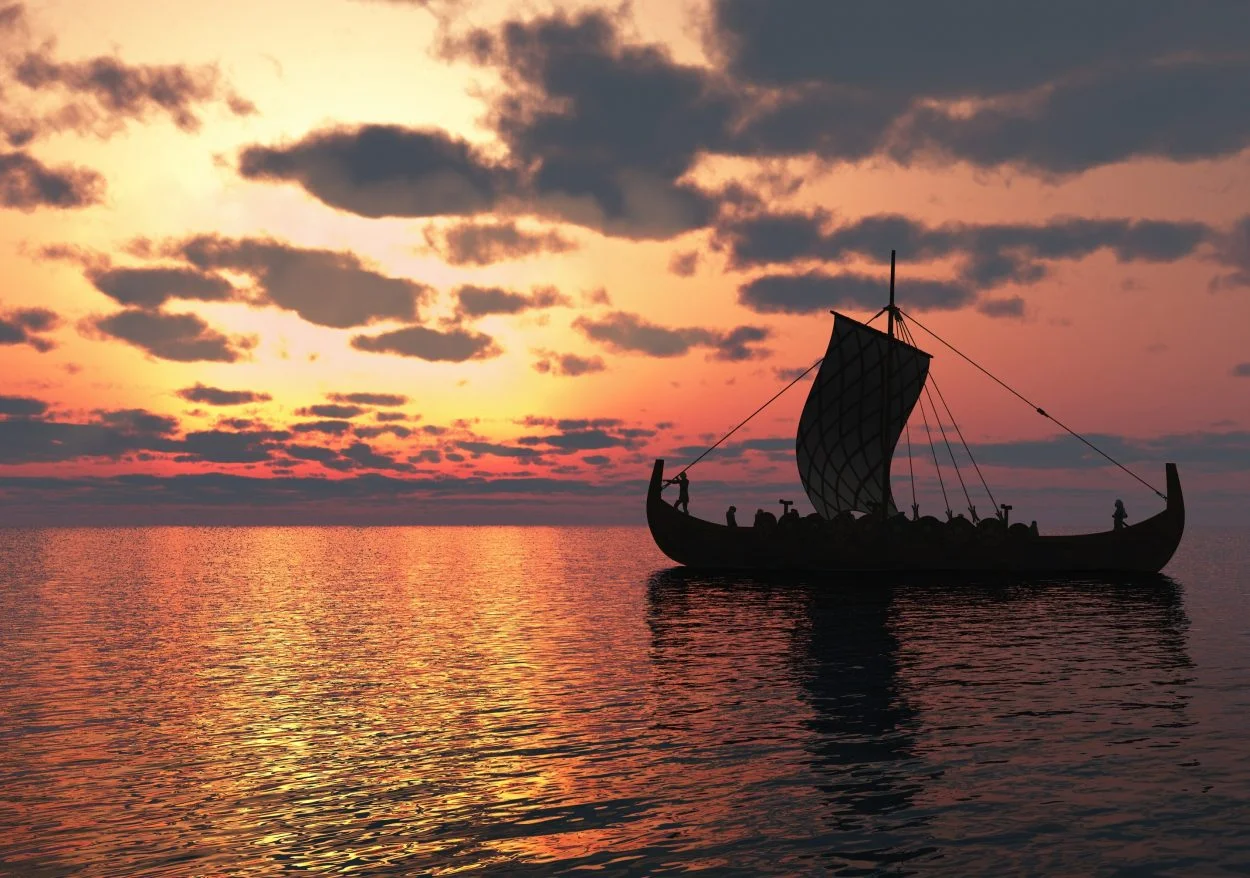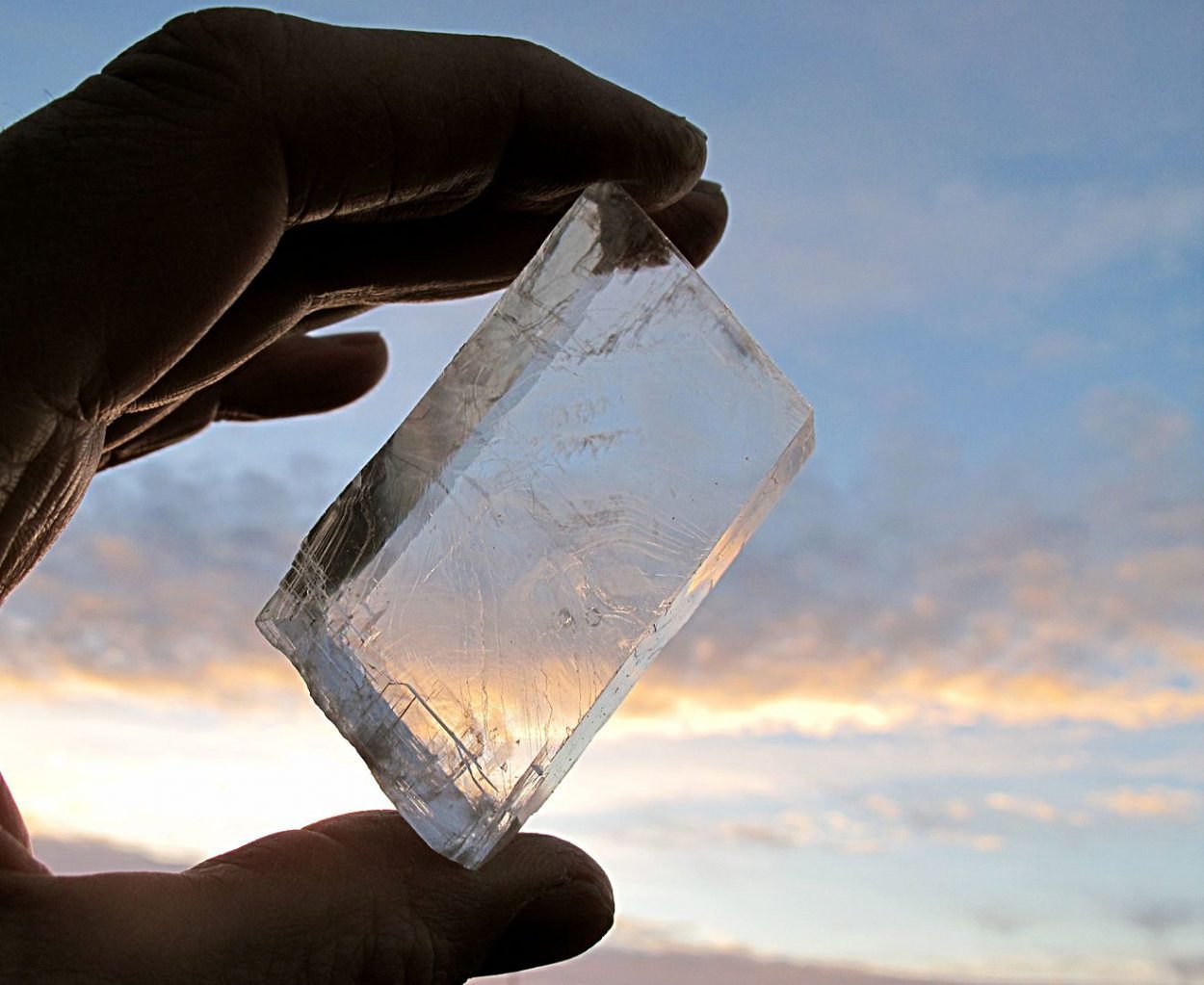Sunstones have been described in Viking tales from the 13th–14th century AD, used as a navigation tool for transatlantic crossings to the new lands of Greenland and Iceland, and possibly even North America, as confirmed by the discovery of the archaeological site of l’Anse aux Meadows in Newfoundland in 1960.
Without any knowledge of the magnetic compass invented by the Chinese during the Han dynasty, the Vikings developed their own methods of navigation to trade over long distances and establish settlements in the new lands.
To navigate, the Vikings used horizon boards and sundials like the wooden disc found in 1948 in Uunartoq. However, these techniques only worked when the sun was directly observable, and not obscured by cloud cover or had moved below the horizon.
To resolve this, the theory suggests that the sunstone was a crystal that would polarise light, and by which the azimuth of the sun can be determined in a partly overcast sky or during twilight conditions.
The existence of sunstones has been a subject of scholarly debate, first appearing in allegorical stories such as the Rauðúlfs þáttr by an unnamed author, who recants the sagas of King Olaf. The Rauðúlfs þáttr relates King Olav’s trip with his retinue, including the queen and bishop, to “Eystridalir” (now Österdalen) a then rather remote part of Norway, bordering on Sweden.

The text describes: “The weather was thick and snowy as Sigurður had predicted. Then the king summoned Sigurður and Dagur (Rauðúlfur’s sons) to him. The king made people look out and they could nowhere see a clear sky.
Then he asked Sigurður to tell where the sun was at that time. He gave a clear assertion. Then the king made them fetch the solar stone and held it up and saw where light radiated from the stone and thus directly verified Sigurður’s prediction.”
In the Hrafns Saga, it says: the weather was sick and stormy. The King looked about and saw no blue sky, then the King took the Sunstone and held it up, and then he saw where the Sun beamed from the stone.”
It wasn’t until the 1960s that the concept of Vikings using polarised light for navigation gained some weight, when Thorkild Ramskou, a Danish archaeologist, noted that Scandinavian Air Systems transArtic pilots used a Polaroid-based instrument called the Twilight Compass (Kollsman sky compass) to determine the Sun’s location.
This led Ramskou to propose that the Viking may have used a local mineral employed as a polariser, such as cordierite crystals, tourmaline or calcite from Icelandic spar.
Experiments by Guy Ropars confirmed that Iceland spar could be used in both cloudy and twilight conditions to detect concentric rings of polarisation and thus the location of the sun.
This was further supported with the discovery of Iceland spar on an Elizabethan ship that sank near Alderney in 1592, however, archaeologists are still yet to find a sunstone among Viking shipwrecks or settlements.
Header Image Credit : Arni Ein – CC BY-SA 3.0





